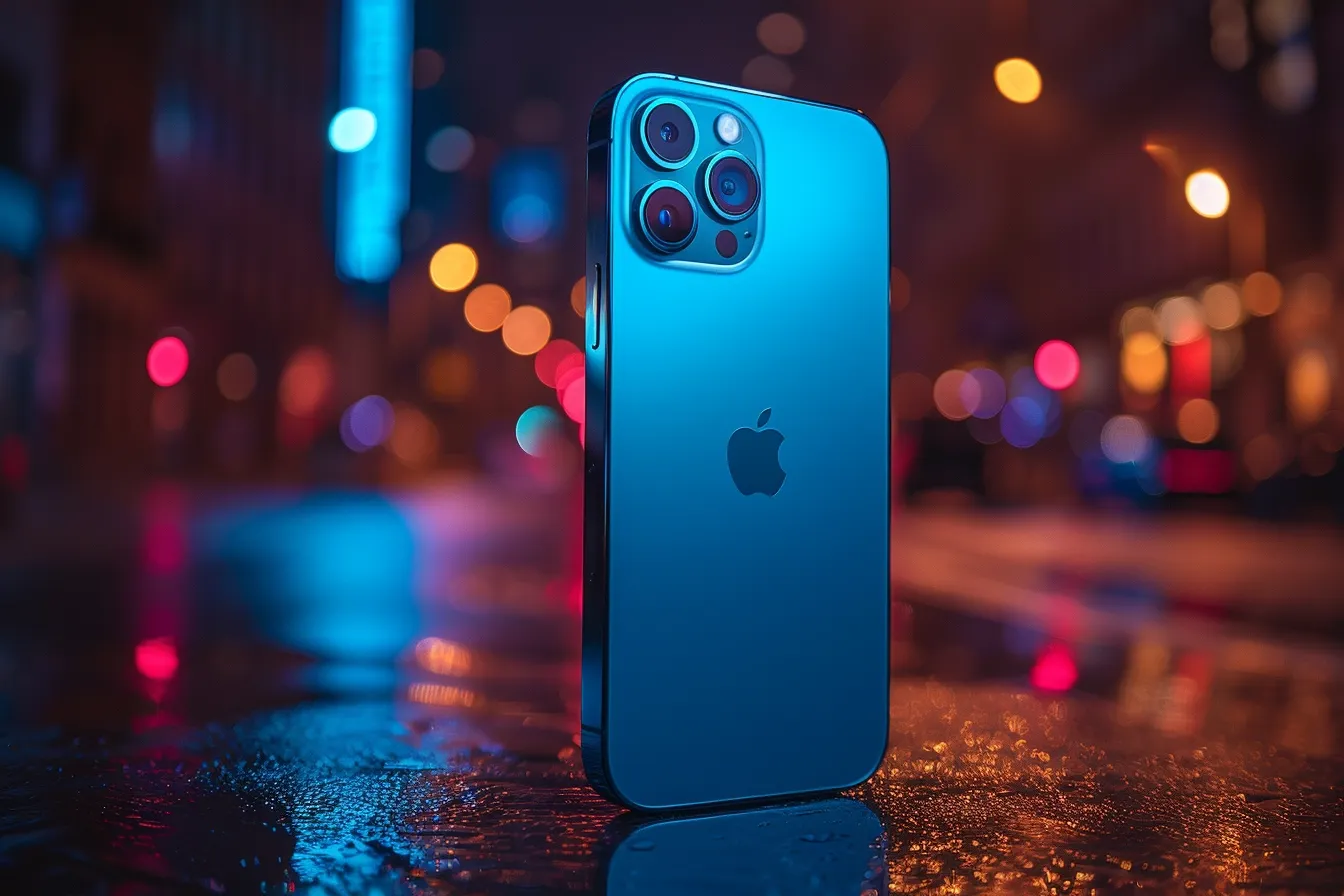Marketing Research
40 case studies in branding.
[Apple: Innovation and Design as Brand Identity]
[Nike: Building a Global Brand Through Storytelling and Innovation]
[Tesla: Revolutionizing the Automotive Industry Through Innovation and Sustainability]
[Amazon: Transforming Retail and Beyond]
[Zoom: Connecting the World Through Video Communications]
[Beyond Meat: A Plant-Based Revolution]
[TikTok: A Dance with Global Success]
[Coca-Cola: Quenching the World’s Thirst for Over a Century]
[Netflix: Redefining the Future of Entertainment]
[Airbnb: Disrupting the Hospitality Industry]
[Starbucks: Brewing Success Through Innovation and Responsibility]
[The Walt Disney Company: A Kingdom of Creativity and Innovation]
[McDonald’s: Serving Success with a Side of Innovation]
[Dove (Unilever): Crafting Beauty and Confidence]
[IKEA: A Symphony of Design, Affordability, and Sustainability]
[LEGO: Building Blocks of Innovation and Success]
[Slack: Revolutionizing Workplace Communication]
[Patagonia: A Case Study in Sustainable Business Practices]
[Spotify: Transitioning from music sales to subscription streaming]
[Warby Parker: Disrupting the traditional eyewear market with an online-first approach]
[Allbirds: A Case Study in Sustainable Footwear Innovation]

40.1 Apple : Innovation and Design as Brand Identity
- Introduction:
Apple Inc., known for its revolutionary technology and design, has built its brand on innovation and a unique user experience. What began as a garage startup in 1976 has become one of the world’s most valuable companies. Let’s explore how Apple achieved this success.
- Background:
Founding and Early Years: Founded by Steve Jobs, Steve Wozniak, and Ronald Wayne, Apple started as a computer manufacturer. The launch of the Apple I computer in 1976 marked the company’s debut, and the subsequent Apple II became a significant success.
Rise to Prominence: With the introduction of the Macintosh in 1984, Apple emphasized graphical user interface, leading the way in user-friendly computing. The iPod, iPhone, iPad, and MacBook line have since become iconic products.
- Product Development: Regularly updating products to include the latest technology.
- Software Ecosystem: Creating a seamless software environment that ties different Apple products together.
- Aesthetic Appeal: Sleek and modern design across all products.
- User Experience: Emphasizing intuitive interfaces.
- Apple Ecosystem: The interoperability of products encourages customers to stay within the Apple brand.
- Customer Service: Apple’s customer support, including the Genius Bar in Apple Stores, provides personalized service.
- Store Design: Apple Stores are known for their minimalist design and layout.
- In-Store Experience: Offering hands-on experience with products and one-on-one customer service.
- High Pricing Strategy: Apple’s premium pricing limits accessibility for many consumers.
- Dependence on Key Products: A significant reliance on the iPhone, which generates a large portion of revenue.
- Manufacturing Practices: Criticisms regarding working conditions in factories.
- Environmental Concerns: Issues related to recycling and waste management.
- Cultural Impact and Legacy:
Apple’s marketing has not only sold products but also shaped culture.
Think Different Campaign: This campaign emphasized Apple’s image as a company for creative and unconventional thinkers.
Influence on Music Industry: With the iPod and iTunes, Apple changed how people buy and listen to music.
Smartphone Revolution: The iPhone transformed mobile communication.
- Conclusion:
Apple’s brand is more than just a logo; it’s a symbol of innovation, quality, and a unique customer experience. By consistently focusing on design and innovation, Apple has maintained a strong brand identity that resonates with consumers globally. Its success offers essential insights into how a focus on innovation, design, and customer experience can build a powerful and enduring brand. The company’s challenges and criticisms also provide a nuanced understanding of the complexities of operating at the forefront of technology.
- Further Exploration:
Apple’s Advertising: Analyzing various Apple advertising campaigns over the years.
Competitor Analysis: Understanding how Apple’s branding strategies compare with competitors like Samsung, Google, and Microsoft.
Future Outlook: Speculating on Apple’s future in an ever-changing technology landscape.
This extended case study provides a comprehensive view of Apple’s branding, suitable for students who want to delve deeply into branding’s multifaceted nature. It includes various aspects of branding, marketing, challenges, and impact, allowing for a rich understanding of how a brand can shape not only a company’s success but also influence broader culture and industry trends.
40.2 Nike: Building a Global Brand Through Storytelling and Innovation
Nike, Inc. is a household name synonymous with athleticism, performance, and innovation. Through its creative marketing strategies and commitment to design, Nike has become a leader in the sports apparel industry. This case study will explore Nike’s rise to prominence and the branding strategies that have kept it at the forefront of the sports industry.
- Founding and Early Years: Founded as Blue Ribbon Sports in 1964 by Bill Bowerman and Phil Knight, the company changed its name to Nike, Inc. in 1971. The famous swoosh logo and the “Just Do It” slogan became integral parts of the brand’s identity.
- Growth and Expansion: With an initial focus on running shoes, Nike expanded into various sports, including basketball, soccer, and golf, becoming a multi-sport brand.
- Historical Partnerships: Nike’s collaboration with athletes like Michael Jordan led to the creation of the Air Jordan line.
- Global Ambassadors: Associating with top athletes like Serena Williams, Cristiano Ronaldo, and LeBron James.
- Emotional Connection: Creating ads that resonate emotionally with consumers, such as the “Find Your Greatness” campaign.
- Social Commentary: Engaging in cultural conversations, like the Colin Kaepernick campaign.
- Technological Advancements: Such as Nike Air cushioning technology and Flyknit fabric.
- Customization: Allowing consumers to personalize products through the NIKEiD platform.
- Nike Run Clubs: Building a community around the brand through running clubs and apps.
- Sustainability Initiatives: Such as the “Move to Zero” campaign focusing on reducing environmental impact.
- Market Competition: Competition from brands like Adidas and Under Armour.
- Pricing Strategies: Balancing premium pricing with accessibility for a broader audience.
- Labor Practices: Historical criticisms regarding factory working conditions.
- Sustainability Challenges: Managing environmental impacts across the supply chain.
Nike’s influence goes beyond sports apparel.
Influence on Streetwear: Collaborations with designers like Virgil Abloh have made Nike relevant in fashion circles.
Promotion of Women’s Sports: Marketing campaigns focusing on female athletes.
Global Reach: Establishing a presence in various global markets and sports.
Nike’s brand success lies in its ability to intertwine sports, culture, and personal aspiration. Its collaborations with athletes, investment in storytelling, and commitment to innovation have made it a leader in the sports apparel industry. The challenges and criticisms it has faced provide insight into the complexities of maintaining a global brand. Understanding Nike’s branding strategies offers an exciting exploration into how a brand can connect with consumers on multiple levels and across diverse markets.
Analyzing Advertising Campaigns: Students may explore various campaigns to understand how Nike connects with different demographics.
Competitor Analysis: Comparing Nike’s strategies with competitors to understand market dynamics.
Future of Sports Branding: Speculating on the future of branding in the sports industry and how Nike may continue to innovate.
This comprehensive case study provides a deep understanding of Nike’s branding strategies and allows students to appreciate the multifaceted nature of branding in the modern market. The connections between sports, culture, innovation, and marketing weave together to create a compelling story that offers valuable insights for anyone interested in branding, marketing, or the sports industry.
40.3 Tesla: Revolutionizing the Automotive Industry Through Innovation and Sustainability
Tesla, Inc. is not just a car manufacturer; it’s a technology company with a mission to accelerate the world’s transition to sustainable energy. Founded by a group of engineers, including Elon Musk, who became the public face of the company, Tesla has become a symbol of innovation and environmental responsibility. This case study explores how Tesla achieved this status.
- Founding and Early Years: Founded in 2003 by Martin Eberhard and Marc Tarpenning, and later joined by Elon Musk, JB Straubel, and Ian Wright, Tesla started with a vision to create electric cars that didn’t compromise on performance.
- Road to Success: The launch of the Tesla Roadster in 2008 proved that electric cars could be both stylish and powerful. Subsequent models, including the Model S, Model X, Model 3, and Model Y, diversified the product line.
- Autopilot: Developing self-driving technology.
- Battery Technology: Pioneering advancements in battery efficiency and lifespan.
- Clean Energy Products: Including solar panels and the Powerwall for energy storage.
- Sustainable Manufacturing: Efforts to minimize environmental impact in production.
- Online Sales: Bypassing traditional dealerships, selling directly to consumers online.
- Customer Experience: Creating unique showrooms and offering test drives.
- Elon Musk’s Twitter Presence: Utilizing social media to promote and defend the brand.
- Product Launches: Hosting grand events to unveil new products.
- Production Challenges: Meeting demand and managing quality control.
- Market Competition: Growing competition from traditional automakers entering the EV market.
- Labor Practices: Controversies related to factory conditions.
- Autopilot Safety Concerns: Debates over the safety of Tesla’s self-driving technology.
Changing Automotive Industry: Pushing the entire automotive industry towards electric vehicles.
Energy Conversation: Shaping dialogues about renewable energy and climate change.
Stock Market Phenomenon: Tesla’s unique position in the stock market as a technology/automotive company.
Tesla’s brand represents a fusion of technology, sustainability, and luxury. Through innovative products, a focus on environmental responsibility, and disruptive sales models, Tesla has not only built a successful brand but has also changed the landscape of the automotive industry. Analyzing Tesla’s strategies, challenges, and impacts provides valuable insights into how a brand can be a catalyst for industry-wide change.
Comparative Analysis: Understanding how Tesla’s branding strategies differ from traditional automotive brands.
Future of Mobility: Speculating on the future of electric vehicles, autonomous driving, and Tesla’s role in shaping that future.
Global Expansion: Exploring Tesla’s efforts to expand into various global markets, such as China and Europe.
40.4 Amazon: Transforming Retail and Beyond
Amazon, founded by Jeff Bezos in 1994, started as an online bookstore and quickly expanded into a vast e-commerce platform that sells virtually everything. Beyond retail, Amazon has also entered cloud computing, entertainment, and even healthcare. This case study will explore Amazon’s diverse business activities and how they’ve contributed to its colossal success.
- Early Years: Started in a garage, focusing on books, before expanding into other categories.
- Global Expansion: Rapid growth into international markets and diversified product offerings.
- Customer Experience: One-click ordering, personalized recommendations, and fast shipping.
- Amazon Prime: Subscription model offering free shipping, video streaming, and more.
- Amazon Marketplace: Allowing third-party sellers to reach Amazon’s vast customer base.
- Amazon Web Services (AWS): A leading provider of cloud computing services.
- Voice Technology: Introduction of Alexa and Echo smart speakers.
- Amazon Studios: Producing and distributing original content.
- Twitch Acquisition: Engaging the gaming community.
- Whole Foods Acquisition: Entering the brick-and-mortar retail space.
- Amazon Pharmacy: Expanding into the healthcare sector.
- Market Power: Criticisms related to monopolistic practices.
- Tax Practices: Scrutiny over tax strategies and contributions.
- Working Conditions: Concerns over conditions in warehouses and treatment of employees.
- Environmental Impact: Criticisms related to packaging and carbon footprint.
- Changing Retail Landscape: Influencing consumer expectations and competitors’ strategies.
- Innovation Leader: Setting standards in technology, logistics, and customer service.
Amazon’s success story is a testament to innovation, diversification, and relentless focus on customer experience. By continuously expanding into new areas, Amazon has not only transformed retail but also various other industries. Examining Amazon’s strategies, challenges, and cultural impact provides a deep understanding of modern business dynamics and the role of branding in shaping industry landscapes.
Competitive Analysis: Understanding Amazon’s position among global tech giants.
Future Projections: Exploring potential new markets and technologies for Amazon.
Regulatory Landscape: Analyzing potential legal and regulatory challenges.
This extensive case study offers students a multifaceted exploration of one of the world’s most impactful brands. From e-commerce to entertainment, Amazon’s influence is felt across multiple sectors. Understanding its success and challenges provides insights into innovation, strategy, ethics, and the complex dynamics of modern business environments.
40.5 Zoom: Connecting the World Through Video Communications
Zoom Video Communications, known simply as Zoom, played a pivotal role in connecting people during a time of global upheaval. Founded by Eric Yuan in 2011, Zoom quickly rose to prominence as a leading platform for video conferencing, webinars, and collaboration. This case study explores Zoom’s exponential growth, the strategies that propelled it, and the challenges it faced along the way.
- Founding Vision: Eric Yuan, a former Cisco executive, founded Zoom with a mission to make video communication frictionless and reliable.
- Early Growth: Despite entering a competitive market, Zoom differentiated itself through ease of use and robust performance.
- Ease of Use: Simple interface, quick setup, and no user account required for joining meetings.
- Quality and Reliability: Consistent video and audio quality across various devices and internet connections.
- Business and Enterprise Solutions: Offering scalable solutions for organizations of all sizes.
- Education Sector: Customized features for virtual classrooms and administrative meetings.
- Healthcare Integration: Compliance with healthcare regulations for telemedicine use.
- Localization: Tailoring offerings to different regions and languages.
- Strategic Partnerships: Collaborating with hardware vendors and integrators for seamless user experience.
- Free Access for Schools: Providing free access to educational institutions during lockdowns.
- Scaling Infrastructure: Rapidly expanding server capacity to handle surging demand.
- Security Enhancements: Addressing early security concerns with significant updates and transparency.
- “Zoombombing” Incidents: Unwanted intrusions into meetings raised questions about security.
- Data Privacy Concerns: Scrutiny over encryption and data handling practices.
- Competing Platforms: Navigating competition from established players like Microsoft and new entrants like Google.
- Sustaining Growth: Challenges in maintaining growth rates as restrictions lift and in-person meetings resume.
- Changing Work Culture: Enabling remote work, hybrid models, and global collaboration.
- Social Connections: Facilitating social interactions, virtual family gatherings, and online events.
- Redefining Communication: Setting new standards for video communication and online engagement.
Zoom’s journey is a compelling study in understanding customer needs, agile adaptation, and effective scaling. From a startup competing against tech giants to becoming a household name, Zoom’s story offers valuable lessons in innovation, strategic planning, crisis management, and ethical considerations. Analyzing Zoom’s branding, growth strategies, challenges, and cultural impact provides rich insights into the dynamics of technology-driven market disruption and the responsibilities that come with rapid success.
Competitive Landscape Analysis: Understanding Zoom’s position in a fast-evolving market.
Ethical and Regulatory Considerations: Analyzing Zoom’s response to security and privacy concerns.
Long-term Strategy and Sustainability: Evaluating Zoom’s plans to sustain growth and diversify offerings.
40.6 Beyond Meat: A Plant-Based Revolution
Beyond Meat has become a synonym for the plant-based food movement, leading the way in creating meat alternatives that cater to a growing global demand for sustainable and ethical eating. This case study explores the company’s journey, its innovative products, market strategies, and the broader impact on the food industry.
- Founding Vision: Established by Ethan Brown in 2009, Beyond Meat aimed to address environmental, health, and ethical concerns related to animal agriculture.
- Product Innovation: The development of plant-based meat substitutes that mimic the taste, texture, and appearance of traditional meat.
- Not Just for Vegetarians: Positioning products to appeal to meat-eaters looking to reduce meat consumption.
- Retail and Food Service Partnerships: Collaborations with supermarkets, fast-food chains, and restaurants.
- Celebrity Endorsements: Engaging well-known advocates of plant-based diets, such as Bill Gates and Leonardo DiCaprio.
- Sustainability Messaging: Emphasizing the environmental and health benefits of plant-based foods.
- Adaptation to Local Tastes: Developing products tailored to various global markets and cuisines.
- Regulatory Compliance: Navigating complex food regulations in different countries.
- Rising Competitors: Facing competition from both traditional food companies and new entrants in the plant-based sector.
- Product Differentiation: Striving to stand out in an increasingly crowded market.
- Taste and Texture Expectations: Meeting consumer expectations for flavors and textures similar to traditional meat.
- Price Barriers: Addressing price competitiveness with animal-based products.
- Transparency in Ingredients: Providing clear information about ingredients and processing methods.
- Life Cycle Analysis: Assessing the full environmental impact of products, from production to consumption.
- Changing Consumer Habits: Influencing a shift in dietary preferences towards plant-based options.
- Industry Collaboration: Collaborations with traditional meat producers and food service providers.
- Impact on Animal Agriculture: Contributing to debates about the sustainability and ethics of conventional meat production.
Beyond Meat’s story represents a transformative moment in the food industry, reflecting a broader cultural shift towards sustainability and conscious consumption. By analyzing Beyond Meat’s product innovation, market strategies, challenges, and cultural impact, students can gain insights into how a company can both lead and adapt to changing consumer values and industry dynamics. This case encourages critical thinking about innovation, branding, competition, ethics, and the interplay between business and societal needs.
Comparative Analysis with Competitors: Examining strategies and approaches of other players in the plant-based food market.
Consumer Behavior Study: Investigating consumer attitudes towards plant-based alternatives.
Sustainability Assessment: Conducting a comprehensive analysis of the sustainability aspects of plant-based foods.
40.7 TikTok: A Dance with Global Success
TikTok, a social media app developed by Chinese tech company ByteDance, has quickly become a sensation, particularly among younger users. This case study examines TikTok’s rapid growth, innovative content delivery, competition, and the complex regulatory landscape it navigates.
- Launch and Growth: TikTok was launched in 2016 and merged with Musical.ly in 2018 to expand its reach in the U.S. market.
- Algorithm Magic: TikTok’s unique algorithm offers personalized content, leading to higher engagement and user retention.
- Short Video Format: Users create engaging 15-second videos with a wide array of editing tools.
- Personalized Feed: The “For You Page” algorithm provides a customized content feed, enhancing user experience.
- Hashtag Challenges: Promoting user-generated content through viral challenges.
- Collaborations and Duets: Enabling collaboration between users to foster community.
- Music and Dance Focus: Strong emphasis on music and dance-related content.
- Influencer Partnerships: Collaborating with youth influencers to drive adoption.
- Local Content Adaptation: Encouraging content that resonates with local cultures and trends.
- Strategic Advertising: Utilizing in-app advertising and partnerships with brands.
- Data Security Issues: Ongoing debates over data privacy and national security.
- Regulatory Scrutiny: Challenges related to compliance with international regulations.
- Competing for Attention: A battle with platforms like Instagram, Snapchat, and YouTube.
- Intellectual Property Concerns: Issues related to copyright and content ownership.
- Democratizing Content Creation: Empowering individuals to become content creators.
- Cultural Influence: Fostering global cultural exchange and trends.
TikTok’s story is a fascinating example of how a social media platform can become a global phenomenon through innovative technology, strategic targeting, community engagement, and adaptability to local cultures. This case allows students to explore various aspects of social media business, including algorithms, user engagement, competition, regulation, and cultural impact.
Algorithm Analysis: Delve into how TikTok’s algorithm works and compare it with other platforms.
Regulatory Compliance Study: Investigate TikTok’s compliance with different countries’ regulatory frameworks.
Cultural Impact Research: Explore how TikTok influences and reflects cultural trends across the globe.
40.8 Coca-Cola: Quenching the World’s Thirst for Over a Century
Coca-Cola, founded in 1886, has grown to become one of the world’s leading beverage companies. This case study explores Coca-Cola’s brand legacy, marketing innovations, product diversity, sustainability initiatives, and the challenges and opportunities in an ever-changing global beverage market.
- Founding and Early Years: From a pharmacy concoction to a global brand.
- Iconic Advertising Campaigns: A look at some of Coca-Cola’s most memorable marketing efforts.
- Logo and Packaging: The evolution of Coca-Cola’s iconic logo and bottle design.
- Sponsorships and Partnerships: Coca-Cola’s association with sports events, entertainment, and charities.
- Local Market Adaptation: Customizing products and campaigns to fit regional tastes and cultures.
- Digital Engagement: Leveraging social media and technology for customer engagement.
- Beverage Portfolio: Introduction to Coca-Cola’s diverse product line, including soft drinks, water, and juices.
- Health-Conscious Offerings: Response to changing consumer preferences towards healthier options.
- Water Stewardship: Initiatives to reduce water usage and support community water projects.
- Recycling and Packaging: Commitment to reducing plastic waste through recycling and innovative packaging.
- Market Competition: An overview of competitors like PepsiCo and changing consumer tastes.
- Health and Regulatory Scrutiny: Challenges related to sugar content and obesity concerns.
- Emerging Markets: Strategies and challenges in entering and thriving in new markets.
- Economic Sensitivities: How global economic fluctuations affect sales and operations.
Coca-Cola’s story offers an inspiring journey into the world of branding, marketing, innovation, and corporate responsibility. The brand’s ability to adapt, innovate, and remain socially responsible provides valuable insights for anyone interested in business, marketing, and sustainability.
Marketing Analysis: Investigate how Coca-Cola has maintained its brand appeal over time.
Sustainability Evaluation: Examine Coca-Cola’s efforts in promoting environmental stewardship.
Global Business Study: Analyze Coca-Cola’s strategies in adapting to different cultures and markets.
This student version of the Coca-Cola case study serves as an engaging educational resource for courses related to business, marketing, branding, sustainability, and global commerce. Through exploration, discussion, and critical analysis, students can uncover the multifaceted dynamics that have shaped Coca-Cola’s success and its continued relevance in today’s competitive and evolving marketplace. It invites learners to reflect on the power of branding, the importance of innovation, the challenges of global expansion, and the growing significance of corporate social responsibility in modern business.
40.9 Netflix: Redefining the Future of Entertainment
Netflix, founded in 1997, has transformed from a DVD rental service to a global streaming giant. With over 200 million subscribers worldwide, Netflix has redefined the way people consume entertainment. This case study explores Netflix’s growth, innovation, content strategy, and the challenges it faces in a competitive market.
- Founding and Early Growth: From a mail-order DVD service to streaming pioneer.
- Subscription Model: Introduction of the subscription model that revolutionized content consumption.
- Streaming Technology: Development of cutting-edge streaming technology to deliver content seamlessly.
- Personalized Recommendations: Utilization of algorithms to tailor content suggestions to individual viewers.
- Original Content Creation: Investment in exclusive shows and movies to differentiate from competitors.
- Content Licensing: Acquiring rights to popular shows and movies to broaden the content library.
- Localization Strategy: Adapting content to suit diverse cultural tastes and regulatory requirements.
- Emerging Markets Growth: Expanding into developing regions with unique pricing and content strategies.
- Streaming Wars: Competition with other streaming platforms like Amazon Prime, Disney+, and HBO Max.
- Regulatory and Legal Hurdles: Navigating complex international laws and content regulations.
- Content Piracy Concerns: Efforts to combat unauthorized sharing and illegal streaming of content.
Netflix’s story is a testament to innovation, adaptability, and the power of a customer-centric approach. The lessons drawn from Netflix’s success and ongoing challenges provide valuable insights for those interested in technology, media, marketing, and global business strategy.
Technology Analysis: Investigate how Netflix’s technological advancements have shaped its success.
Content Strategy Evaluation: Examine how Netflix’s original content creation has redefined the entertainment industry.
Global Business Study: Analyze Netflix’s strategies for entering and thriving in diverse global markets.
40.10 Airbnb: Disrupting the Hospitality Industry
Airbnb, established in 2008, has emerged as a disruptive force in the global hospitality industry. This platform connects hosts and travelers, providing unique accommodations and experiences. This case study examines Airbnb’s innovation, growth, and the challenges it faces, providing comprehensive insights for students interested in entrepreneurship, technology, law, and global business.
- Founding Story: How an idea to rent air mattresses turned into a revolutionary business concept.
- Peer-to-Peer Model: Airbnb’s model of connecting hosts with travelers and its impact on traditional lodging.
- Platform Design: Exploration of the user-friendly design, including search functionality, booking process, and communication between hosts and guests.
- Trust and Community Building: Methods of establishing trust through reviews, verification processes, host education, community guidelines, and conflict resolution.
- Revenue Model: Understanding Airbnb’s commission-based revenue model, pricing strategies, and value proposition for hosts and guests.
- Global Growth Strategy: Airbnb’s rapid expansion into various cities and countries, including marketing strategies, partnerships, and local engagement.
- Experiences and Diversification: Introduction of Airbnb Experiences, business travel accommodations, and other extensions of the platform.
- Challenges in Scaling: Examination of the obstacles faced during rapid growth, including maintaining quality, customer support, and local adaptation.
- Local Regulations and Compliance: Encounters with legal issues, zoning laws, city ordinances, and ongoing battles with regulators and the traditional hotel industry.
- Impact on Housing Markets: Exploration of criticisms and studies on Airbnb’s effect on local housing prices, availability, gentrification, and neighborhood dynamics.
- Safety and Liability Concerns: Analysis of safety measures, insurance policies, host responsibilities, and incidents that have raised concerns.
- Sustainable Travel Initiatives: Airbnb’s efforts to promote eco-friendly travel practices, partnerships with local communities, and support for responsible hosting.
- Community Outreach and Disaster Response: Airbnb’s involvement in community development and providing emergency accommodations during natural disasters or crises.
- Brand Identity and Positioning: Examination of Airbnb’s brand evolution, advertising campaigns, social media presence, and efforts to differentiate itself from competitors.
- Customer Segmentation and Personalization: Strategies for targeting different customer segments and personalizing the user experience through algorithms and data analysis.
Airbnb’s transformation of the hospitality industry offers an in-depth look into technology-driven disruption, entrepreneurial innovation, community engagement, legal complexities, and social impact. The multifaceted nature of Airbnb’s journey provides a rich context for exploring diverse business concepts.
- Further Exploration and Assignments:
Platform Analysis Project: Students analyze Airbnb’s platform functionality, user experience, and technological innovations.
Regulatory Environment Study: Research and debates on the legal and ethical aspects of Airbnb’s operations in different regions.
Global Strategy Simulation: Group exercise to plan Airbnb’s entry into a new market, considering cultural, legal, and market dynamics.
Social Impact Assessment: Critical evaluation of Airbnb’s social responsibility efforts, community impact, and sustainability initiatives.
40.11 Starbucks: Brewing Success Through Innovation and Responsibility
Starbucks, founded in 1971 in Seattle, Washington, has become a global coffee icon, known for its premium quality coffee, unique store ambiance, and commitment to social responsibility. This case study examines Starbucks’ journey from a single store to an international chain, focusing on its strategic decisions, marketing practices, innovations, and challenges.
- Founding and Early Years: How Starbucks transformed from a single store selling quality coffee beans into a global coffeehouse chain.
- Mission and Vision: An examination of Starbucks’ commitment to inspiring and nurturing the human spirit, one cup at a time.
- Retail Innovation: An exploration of Starbucks’ unique store designs, customer experience, and the introduction of the “third place” concept.
- Product Diversification: Starbucks’ expansion into various products, including specialty beverages, food, packaged products, and even non-coffee items.
- Global Expansion: Strategies and challenges in entering new markets across different continents.
- Brand Building and Positioning: How Starbucks built a strong brand that emphasizes quality, community, and ethical sourcing.
- Loyalty Programs: The impact and success of Starbucks’ rewards program in enhancing customer loyalty and retention.
- Digital Engagement: Utilizing mobile apps, social media, and digital marketing to engage customers.
- Ethical Sourcing: Commitment to sourcing ethically produced coffee through fair trade practices and farmer support.
- Environmental Initiatives: Efforts in reducing waste, conserving energy, and promoting reusable products.
- Community Engagement: Investing in local communities through education, volunteerism, and support for local causes.
- Market Saturation: The challenge of maintaining growth amid increasing competition and market saturation.
- Cultural Sensitivity: Navigating cultural differences in global markets and occasional backlashes.
- Economic Factors: Responding to economic downturns and changes in consumer spending habits.
- Mobile Ordering: Implementing mobile ordering and payment systems to enhance convenience.
- Data Analytics: Leveraging data to personalize marketing and enhance customer experiences.
- Partnerships with Technology Companies: Collaborations to expand reach and offer new products.
Starbucks’ story offers valuable insights into brand building, global expansion, innovation, social responsibility, and resilience in the face of challenges. Its journey from a single store to a global chain showcases the importance of strategic decision-making, adaptability, and commitment to core values.
Supply Chain Analysis: Investigate Starbucks’ complex supply chain and its approach to ensuring quality and ethical practices.
Competitive Landscape Study: Analyze Starbucks’ competitive positioning and the dynamics of the coffeehouse industry.
Crisis Management Review: Examine Starbucks’ response to various challenges and crises over the years.
40.12 The Walt Disney Company: A Kingdom of Creativity and Innovation
The Walt Disney Company, founded in 1923 by Walt and Roy O. Disney, has grown from a small animation studio to a global entertainment conglomerate. This case study delves into Disney’s storied history, business diversification, technological leadership, and strategies that have made it a symbol of creativity and imagination.
- Founding and Early Success: The birth of Mickey Mouse, the creation of the first synchronized sound and full-color cartoons, and the groundbreaking “Snow White and the Seven Dwarfs.”
- Expanding the Magic Kingdom: Disney’s foray into theme parks, beginning with Disneyland in 1955 and followed by a global expansion.
- Diversification: Exploration of Disney’s diversification into various entertainment sectors, including movies, television, theme parks, merchandise, and media networks.
- Content Creation and Distribution: Examination of Disney’s strategies in producing and distributing content through various channels, including streaming services like Disney+.
- Global Expansion: Analysis of Disney’s strategies to enter and thrive in international markets, including China and Europe.
- Brand Building: How Disney built a universally loved brand based on storytelling, characters, and immersive experiences.
- Synergy: Understanding how Disney leverages its characters and stories across multiple business segments.
- Digital Engagement: Exploration of Disney’s digital marketing efforts, social media presence, and engagement with younger audiences.
- Revolutionizing Animation: Disney’s pioneering role in animation technology, including the introduction of CGI.
- Immersive Experiences: The integration of technology in theme parks for personalized and interactive experiences.
- Strategic Acquisitions: Insight into Disney’s acquisitions, including Pixar, Marvel, Lucasfilm, and 21st Century Fox.
- Collaborations and Partnerships: Exploration of Disney’s collaborations with other companies to enhance its product offerings and reach.
- Corporate Social Responsibility (CSR): Disney’s efforts in environmental conservation, community support, and ethical sourcing.
- Content and Cultural Sensitivity: Balancing storytelling with cultural respect and inclusiveness.
- Market Saturation and Competition: Navigating an increasingly competitive media and entertainment landscape.
- Regulatory and Legal Challenges: Adhering to varying regulations across global markets.
- Pandemic Response: Adaptation and response to the COVID-19 pandemic’s impact on various business segments.
The Walt Disney Company’s journey offers a captivating exploration of creativity, innovation, strategic thinking, and adaptability. From pioneering animation to building global theme parks, launching streaming services, and acquiring leading entertainment brands, Disney’s story is a rich lesson in entrepreneurship, marketing, technology, and global business strategies.
Leadership Analysis: Investigate Disney’s leadership strategies and the role of key leaders in shaping the company.
Competitive Landscape Study: Analyze Disney’s competitive positioning and the dynamics of the entertainment industry.
Crisis Management Review: Examine Disney’s response to various challenges, including economic downturns and unexpected crises.
40.13 McDonald’s: Serving Success with a Side of Innovation
McDonald’s is more than just a fast-food chain; it’s a global phenomenon that has shaped the way people eat around the world. Founded in 1940 by Richard and Maurice McDonald, the company has since evolved into a multi-billion-dollar giant with thousands of locations worldwide. This case study examines the key ingredients behind McDonald’s success.
- Founding and Early Growth: A look at McDonald’s beginnings, from a single drive-in to the creation of the Speedee Service System, a precursor to the modern fast-food restaurant.
- Global Expansion: How McDonald’s turned the Golden Arches into an international symbol, adapting to various cultures and tastes.
- Franchising: Exploration of McDonald’s franchising model and how it fueled the company’s rapid growth.
- Menu Innovation: How McDonald’s constantly innovates its menu to meet consumer demands and local preferences.
- Supply Chain Management: Examination of McDonald’s logistical prowess in sourcing and distributing ingredients across the globe.
- Sustainability Efforts: An insight into McDonald’s initiatives to reduce environmental impact and promote sustainable practices.
- Iconic Branding: Understanding how the Golden Arches and characters like Ronald McDonald became global icons.
- Advertising and Promotions: A review of memorable ad campaigns and marketing strategies that resonate with various demographics.
- Customer Experience: How McDonald’s focuses on customer satisfaction through services like McDelivery and the recent digital transformation.
- Digital Ordering and Mobile Apps: Exploration of McDonald’s embrace of technology to enhance customer convenience.
- Smart Restaurants: How technology is changing the in-store experience, from kiosks to AI-powered drive-thrus.
- Health Concerns: Analysis of criticisms regarding the nutritional content of McDonald’s food and the company’s response.
- Labor Practices: Discussion of challenges related to employee wages, benefits, and working conditions.
- Competitive Landscape: Examination of the fast-food market competition and how McDonald’s maintains its edge.
- Adaptation to Changing Consumer Preferences: The shift towards healthier options and how McDonald’s is responding.
- Investments in Technology: Future technological innovations that may shape the McDonald’s experience.
- Sustainability Goals: Long-term objectives in minimizing environmental impact and promoting social responsibility.
McDonald’s journey offers a multifaceted case study in entrepreneurship, innovation, marketing, global expansion, and adaptability. From flipping burgers in a single location to flipping the script on fast food worldwide, the company continues to evolve, facing new challenges and seizing opportunities.
40.14 Dove (Unilever): Crafting Beauty and Confidence
Dove, a personal care brand owned by Unilever, has become synonymous with beauty and self-esteem through its innovative products and socially conscious campaigns. This case study invites you to explore Dove’s journey and its commitment to promoting a more inclusive and positive depiction of beauty.
- Dove’s Inception: A look at the brand’s origins in 1957 with the launch of the Dove Beauty Bar.
- Product Portfolio: Overview of Dove’s wide range of personal care products, including body wash, hair care, and skincare.
- The “Real Beauty” Campaign: Examination of Dove’s groundbreaking campaign that challenged conventional beauty standards.
- Customer Engagement: Insights into Dove’s interaction with customers through social media, events, and community outreach.
- Global Expansion: Strategies behind Dove’s growth into various international markets and adaptation to different cultures.
- Research and Development: A look at how Dove constantly innovates its product line through scientific research and consumer insights.
- Sustainability Initiatives: Understanding Dove’s efforts in reducing environmental impact and promoting ethical sourcing.
- Promoting Self-Esteem: Analysis of Dove’s initiatives to enhance self-esteem, particularly among young women, through education and advertising.
- Partnerships and Collaborations: How Dove collaborates with NGOs, influencers, and other stakeholders to amplify social messages.
- Market Competition: Assessment of the competitive landscape and how Dove differentiates itself.
- Advertising Backlash: Discussion of certain advertising missteps and how the brand managed the fallout.
- Trend Adaptation: Exploration of how Dove aligns with emerging beauty and wellness trends.
- Technology Integration: How Dove leverages technology, including AI and data analytics, for product development and personalized experiences.
- Sustainability Goals: Examination of Dove’s long-term commitment to environmental sustainability and ethical practices.
Dove’s journey presents an engaging case study that goes beyond products and marketing to encompass social values, consumer connection, innovation, and global reach. The brand’s commitment to challenging beauty norms and promoting self-esteem has set it apart in a crowded market.
40.15 IKEA: A Symphony of Design, Affordability, and Sustainability
- Founding and Mission: Founded in Sweden in 1943 by Ingvar Kamprad, IKEA’s mission is to “create a better everyday life for many people.” It emphasizes affordability, design, and functionality.
- Overview of Offerings: IKEA offers a wide range of home furnishings, including furniture, kitchen appliances, decor, and accessories.
- Global Presence: With over 400 stores in 50 countries, IKEA has become a global leader in the home furnishing industry.
- Product Design and Development: IKEA’s products are known for minimalist design, functionality, and ease of assembly. Collaboration with designers worldwide keeps its offerings fresh and innovative.
- Supply Chain and Manufacturing: A well-integrated supply chain with close relationships to over 1,000 suppliers allows IKEA to maintain low costs while ensuring quality and sustainability.
- Retail Experience: The IKEA in-store experience is distinctive with showrooms, self-service warehouses, and in-store restaurants offering Swedish cuisine.
- Pricing Strategy: IKEA’s cost-conscious approach means designing products from the price tag up, ensuring affordability without compromising on quality.
- Digitalization and E-commerce: With a strong online presence, IKEA provides customers with online shopping options, planning tools, and virtual product previews.
- Advertising Campaigns: IKEA uses creative and often humorous advertising to appeal to a broad customer base, focusing on life improvement and solutions.
- Online Engagement: Digital catalogs, apps, and social media keep IKEA’s audience engaged and provide valuable customer insights.
- In-store Promotions: Seasonal displays and in-store events promote new products and encourage customer interaction.
- Brand Identity and Values: IKEA’s brand emphasizes sustainability, inclusiveness, and accessibility.
- Environmental Practices: Commitment to sustainable sourcing, waste reduction, and energy efficiency are core to IKEA’s operations.
- Renewable Energy Projects: IKEA invests in wind and solar energy, aiming to produce as much renewable energy as it consumes in its operations by 2030.
- Social Responsibility: The IKEA Foundation supports initiatives related to children’s education, refugee support, and climate change.
- Sustainable Product Lines: IKEA offers products that promote sustainable living, from energy-efficient appliances to recycled materials.
- Cultural Adaptation: IKEA adapts its product lines and marketing to reflect local tastes, customs, and living conditions.
- Market Entry Strategies: IKEA studies each market carefully, adapting its store format and product selection to local needs.
- Challenges in Different Markets: Navigating regulations, cultural differences, and local competition has posed challenges in some markets.
- Competition and Market Pressures: IKEA faces competition from both traditional furniture stores and online platforms.
- Cultural Missteps: Some global marketing campaigns have been criticized for insensitivity to local cultures.
- Quality Concerns: IKEA’s emphasis on low cost has sometimes led to perceived quality issues.
- Emerging Markets: Expansion into new markets like India and South America presents opportunities and challenges.
- Technological Innovations: IKEA is exploring augmented reality, artificial intelligence, and smart home technologies.
- Sustainability Goals: Commitment to further sustainability through its entire value chain.
- Collaborations and Partnerships: IKEA’s collaboration with designers, tech companies, and even other retailers fuels innovation.
IKEA’s unique blend of design, affordability, sustainability, and global reach has made it a standout brand in the home furnishing industry. The company’s multifaceted approach offers a rich study of modern retail, branding, international business, and corporate responsibility. The complexities and successes of IKEA’s model provide invaluable insights and inspiration for students across various disciplines.
40.16 LEGO: Building Blocks of Innovation and Success
- Founding and History: LEGO was founded in 1932 by Ole Kirk Christiansen in Billund, Denmark. The LEGO brick, as we know it today, was launched in 1958.
- Product Portfolio: Beyond the iconic bricks, LEGO’s products include themed sets, video games, movies, and educational tools.
- Mission and Values: LEGO’s mission is to “Inspire and develop the builders of tomorrow” through creative play and learning.
- Innovation in Design: LEGO constantly innovates its product line, incorporating new themes and licensed partnerships (e.g., Star Wars, Marvel).
- Quality and Precision: The manufacturing process emphasizes precision and quality, ensuring compatibility across generations of LEGO bricks.
- Digital Expansion: LEGO has embraced digital gaming and augmented reality experiences, extending the brand into the digital realm.
- Brand Building: LEGO’s brand revolves around creativity, imagination, learning, and fun.
- Advertising and Promotion: Utilizing various channels, LEGO engages customers through inventive advertising campaigns and social media.
- Community Engagement: LEGO Ideas invites fans to submit and vote on new product ideas. The LEGO community is actively engaged in product development, events, and online forums.
- Retail Experience: LEGO stores offer hands-on experiences with play areas, workshops, and exclusive products.
- Online Shopping: The online store provides an extensive product selection, customization options, and exclusive membership benefits.
- Global Distribution: LEGO products are available in more than 140 countries through various retail channels.
- LEGO Education: Through LEGO Education, the company offers learning solutions that encourage hands-on, playful learning in schools.
- Charitable Activities: The LEGO Foundation supports children’s development and learning through various global initiatives.
- Environmental Sustainability: LEGO is committed to reducing its environmental impact, including the goal to produce all products and packaging with sustainable materials by 2030.
- Market Pressures: Facing competition from both traditional toys and digital games, LEGO has had to continuously innovate and adapt.
- Intellectual Property Issues: LEGO has faced legal challenges around patents and copyrights, particularly concerning the design of its bricks.
- Economic Fluctuations: Economic downturns and shifts in consumer behavior have influenced LEGO’s sales and growth strategies.
- Adaptation to Local Markets: LEGO tailors its marketing and product strategies to different cultures and consumer preferences.
- Challenges in Emerging Markets: Entering new markets such as China has presented both opportunities and challenges, including issues related to counterfeiting.
- Technological Innovation: LEGO continues to explore new technologies, such as 3D printing and artificial intelligence.
- Collaborations and Licensing: Partnerships with entertainment franchises and designers fuel creativity and market reach.
- Focus on Adult Fans: LEGO has been expanding its appeal to adult fans through complex sets and themes that cater to various interests.
LEGO’s journey from a small carpentry shop to a global brand is a study in innovation, adaptability, community engagement, and brand stewardship. Its commitment to quality, creativity, and social responsibility offers a multifaceted case study with insights into product development, marketing, sustainability, global business strategy, and more. The story of LEGO inspires aspiring entrepreneurs, marketers, designers, and leaders to think creatively and act with purpose and integrity.
40.17 Slack: Revolutionizing Workplace Communication
- Founding and Background: Launched in 2013 by Stewart Butterfield, Eric Costello, Cal Henderson, and Serguei Mourachov, Slack has quickly become one of the leading tools for team communication.
- Business Model: Slack offers a freemium model where basic features are free, with paid plans for more functionality.
- Key Features: Slack provides channels, direct messaging, file sharing, integrations with other tools, and more to enhance team communication.
- Innovation and Updates: Continual updates and feature enhancements have kept Slack at the forefront of workplace communication tools.
- User-Centric Design: Slack’s interface is designed for ease of use and collaboration, reducing email overload.
- Target Audience: Primarily targeting businesses, both small and large, Slack has also found usage in communities and other groups.
- Growth Strategies: Referral programs, partnerships, and effective content marketing have contributed to Slack’s rapid adoption.
- Customer Engagement: Slack has utilized community engagement, feedback, and customer support to foster loyalty and improve its product.
- Competitors: Major competitors include Microsoft Teams, Zoom, and others offering communication and collaboration tools.
- Differentiation: Slack’s integrations, customization, and user experience have been key differentiators.
- Security Concerns: As with many digital platforms, security and privacy have been challenges, and Slack has implemented measures to ensure data protection.
- Freemium to Premium: The free version attracts users, while additional features and support drive customers to paid plans.
- Enterprise Solutions: Slack’s Enterprise Grid offers solutions tailored to large organizations, including advanced security and administrative features.
- Localization and Cultural Adaptation: Slack has localized its product for various markets and cultures to drive global adoption.
- Challenges in Emerging Markets: Issues such as local compliance, competition, and connectivity can present challenges in various regions.
- Pandemic Response: The shift to remote work during the COVID-19 pandemic led to a surge in Slack usage, adapting to new work patterns.
- Long-term Trends: Remote and hybrid work trends may shape Slack’s future development and market positioning.
- Strategic Acquisitions: Acquiring companies like Rimeto added capabilities to Slack’s portfolio.
- Partnerships: Collaborations with companies like Google, Salesforce, and others have extended Slack’s functionality.
- Salesforce Acquisition: The pending acquisition by Salesforce as of the cut-off knowledge date may significantly shape Slack’s future direction.
- Continued Innovation: Slack continues to explore new features, integrations, and market opportunities.
Slack’s story offers insights into the fast-paced world of technology startups, product development, global expansion, and market competition. Its response to changing work patterns and its strategic acquisitions and partnerships make it a rich subject for study. The lessons from Slack’s journey are relevant to aspiring entrepreneurs, product managers, marketers, and others interested in technology, innovation, and the future of work.
40.18 Patagonia: A Case Study in Sustainable Business Practices
- Background: Patagonia, founded in 1973 by Yvon Chouinard, is an outdoor clothing and gear retailer known for its commitment to environmental sustainability.
- Mission: “Build the best product, cause no unnecessary harm, use business to inspire and implement solutions to the environmental crisis.”
- Innovation: Patagonia has been a leader in developing sustainable fabrics and materials.
- Quality & Durability: Emphasizing long-lasting products to reduce consumerism.
- Recycling & Repairing: Offering repair services and encouraging recycling of products through programs like “Worn Wear.”
- Transparency: Publicly sharing supply chain information and environmental impacts.
- Activism Marketing: Taking strong stances on environmental and social issues.
- Community Engagement: Collaborating with NGOs and community organizations.
- Supply Chain: Focusing on ethical production, fair labor practices, and organic materials.
- Environmental Activism: Regularly donating to environmental causes and supporting conservation efforts.
- B Corp Certification: Patagonia is a certified B Corporation, aligning profit with purpose.
- Profit vs. Purpose: Balancing strong financial growth with a commitment to environmental and social responsibility.
- Investing in Sustainability: Reinvesting profits in sustainable initiatives and environmental causes.
- Market Competition: Navigating a competitive market while maintaining ethical standards.
- Scale and Growth: Balancing growth and scalability with sustainability commitments.
- Greenwashing Accusations: Managing perceptions and criticisms related to authenticity and impact.
- International Expansion: Adapting sustainable practices across diverse markets and cultures.
- Global Partnerships: Collaborating with global organizations to expand environmental initiatives.
- Employee Engagement: Fostering a workplace culture that aligns with company values.
- Leadership and Governance: Maintaining leadership that embodies the brand’s ethos.
- Influencing Other Brands: Patagonia’s practices have influenced other companies to consider sustainability.
- Industry Collaboration: Working with competitors on common goals such as responsible sourcing.
- Adaptation to Climate Change: Developing strategies to mitigate and adapt to the impacts of climate change.
- New Market Opportunities: Exploring new product lines and markets while adhering to core values.
Patagonia serves as a compelling example of a company that has successfully integrated sustainability, ethical considerations, and environmental activism into every aspect of its business. From innovative product development to bold marketing strategies and influential industry leadership, Patagonia’s case study offers valuable insights for those interested in business ethics, environmental stewardship, social entrepreneurship, and innovative brand management. The brand’s ongoing challenges and successes provide rich material for analysis and reflection on the future of sustainable business practices.
40.19 Spotify: Transitioning from music sales to subscription streaming
- Background: Spotify, founded in 2006 by Daniel Ek and Martin Lorentzon, transformed the way people access and enjoy music.
- Mission: “To unlock the potential of human creativity—by giving a million creative artists the opportunity to live off their art and billions of fans the opportunity to enjoy and be inspired by it.”
- Streaming Model: Spotify’s on-demand streaming model allows users to access millions of songs and podcasts.
- Algorithm & Personalization: The use of algorithms to create personalized playlists and recommendations.
- Freemium Model: Free, ad-supported tier alongside premium subscriptions.
- Revenue Streams: Subscriptions, advertising, and partnerships.
- User Engagement: Innovative playlists like “Discover Weekly” engage users.
- Collaborations: Partnerships with artists, labels, and other brands.
- International Reach: Spotify has expanded to numerous countries, adapting to various markets and regulations.
- Localized Content: Offering content that resonates with local cultures and tastes.
- Market Competitors: Facing competitors like Apple Music, Amazon Music, and YouTube Music.
- Royalty Disputes: Navigating complex relationships with labels, artists, and rights holders.
- Environmental Footprint: Efforts to reduce carbon footprint and promote sustainable practices.
- Supporting Artists: Initiatives to support emerging artists and creatives.
- New Features: Continual innovation in features and user experience.
- Podcasts and Original Content: Investing in podcasts and original content to diversify offerings.
- Technology Investments: Exploring technologies like AI to enhance user experience.
- Changing Consumer Behavior: Transforming the way people consume and interact with music.
- Influence on the Music Industry: Affecting record labels, artists, and music distribution.
Spotify’s rise as a leading music streaming platform offers a multifaceted case study encompassing technology innovation, marketing strategies, global expansion, and industry impact. From navigating complex licensing agreements to crafting personalized user experiences, Spotify’s journey provides valuable insights into digital transformation, competitive strategy, customer engagement, and the future of entertainment. It serves as a valuable example for understanding modern business dynamics in the digital age, including the ongoing challenges and opportunities of operating in a rapidly evolving industry.
40.20 Warby Parker: Disrupting the traditional eyewear market with an online-first approach
- Background: Founded in 2010, Warby Parker aimed to offer designer eyewear at a fraction of the price through a direct-to-consumer model.
- Mission: “To offer designer eyewear at a revolutionary price, while leading the way for socially conscious businesses.”
- Design: In-house design leading to unique and affordable eyewear.
- Home Try-On: A free program allowing customers to try on glasses at home before purchasing.
- Direct-to-Consumer: Selling directly to customers through e-commerce and physical stores, cutting out intermediaries.
- Social Responsibility: “Buy a Pair, Give a Pair” program donates glasses to those in need.
- Digital Marketing: Effective use of social media and content marketing.
- Community Engagement: Building brand loyalty through community events and collaborations.
- Physical Stores: Combining e-commerce with brick-and-mortar stores for an omnichannel experience.
- International Growth: Expanding to Canada and other markets, adapting to local regulations and preferences.
- Traditional Competitors: Competition with traditional eyewear brands and retailers.
- Copycat Brands: Managing competition from similar direct-to-consumer eyewear startups.
- Environmentally Conscious Manufacturing: Commitment to using sustainable materials.
- Carbon Neutrality: Efforts to reduce and offset carbon emissions.
- Virtual Try-On: Use of augmented reality for virtual try-ons via mobile app.
- Telehealth Services: Offering eye exams and prescriptions through telehealth technology.
- Disrupting Traditional Retail: Changing the way people shop for glasses.
- Promoting Social Responsibility: Encouraging other brands to adopt socially responsible practices.
Warby Parker’s innovative approach to eyewear retail has not only disrupted traditional industry practices but also set new standards in customer experience, social responsibility, and sustainability. Through its unique business model, commitment to social causes, and use of technology, Warby Parker has carved out a unique position in the market. The case study of Warby Parker offers valuable insights into how innovative thinking, customer-centric approaches, and ethical business practices can create a strong brand identity and successful business in today’s competitive retail landscape. It’s an exemplary story for understanding modern entrepreneurship, retail strategies, marketing, and social entrepreneurship.
40.21 Allbirds: A Case Study in Sustainable Footwear Innovation
- Background: Allbirds, founded in 2016 by Tim Brown and Joey Zwillinger, aimed to create comfortable and sustainable footwear.
- Mission: “To tread lighter on the planet while making better things people love to wear.”
- Sustainable Materials: Allbirds uses renewable materials like merino wool and eucalyptus fiber.
- Comfort and Design: Combining sustainable materials with comfortable and aesthetically appealing design.
- Direct-to-Consumer: Selling directly to customers to reduce costs and improve accessibility.
- Ethical Sourcing: Ensuring the ethical treatment of animals and workers in the supply chain.
- Storytelling: Emphasizing the brand’s commitment to sustainability and innovative materials.
- Word-of-Mouth: Leveraging satisfied customers as brand advocates.
- International Presence: Expanding into international markets while staying true to the brand’s values.
- Localized Initiatives: Tailoring products and marketing to suit local preferences.
- Market Competitors: Competing with established footwear brands and other sustainable startups.
- Scale and Sustainability: Balancing growth with maintaining eco-friendly practices.
- Carbon Footprint: Measuring and reducing the brand’s carbon footprint.
- Circular Economy: Exploring ways to make footwear more recyclable and sustainable.
- Transparency: Sharing information about the supply chain and material sources.
- Community Engagement: Partnering with organizations for social and environmental causes.
- Research and Development: Continuing to innovate with new materials and product lines.
- Market Expansion: Exploring new markets and consumer segments.
- Changing Consumer Behavior: Influencing the way consumers think about sustainable products.
- Inspiring Competitors: Encouraging other brands to prioritize sustainability.
Allbirds’ unique approach to footwear production, blending innovation, comfort, and sustainability, has positioned it as a leader in the sustainable fashion movement. The Allbirds case study provides a valuable window into the world of sustainable business, marketing, and product innovation. By exploring Allbirds’ strategies and challenges, students can gain insights into how a commitment to ethical practices, environmental consciousness, and customer satisfaction can drive success in today’s competitive market. The case offers lessons for those interested in entrepreneurship, sustainable business practices, and ethical consumerism.
READ TIME: 3 MINUTES
6 examples of great brand strategy case studies, share article:.

ARTICLE BY Anthony Chapman
What is brand strategy.
The term brand strategy relates to the methods a brand will use to market its products or services to consumers. It focuses on how they present and position themselves in the market. There are several strategies a brand can use and here are some of the biggest.
Company Name
This is where a brand will focus on marketing their company/brand name as a whole. They don’t focus on any specific element of their brand, services or products. Their goal is to improve brand awareness through marketing their name alone.
Individual Branding
This is where a brand will focus on a specific element of their brand. This could range from an individual product to a service, or even a person. This form of branding moves away from overall brand marketing and narrows its focus towards a specific element.
Attitude Branding
This is where the brand markets the idea or emotion behind their brand rather than the name or product. A brand will align itself with this idea, emotion or feeling and market their association with this factor.
Brand Extension
Brand extension is when a brand markets a sub-brand rather than the overall parent brand. Many big brands are owned by even bigger brands, but they don’t market the larger parent brand.
Private Label
Not all brands or companies create their own products. The term private label refers to products that are produced for multiple brands from one creator. Private labels offer an in-house version of commonly produced products, and a brand can market this as a lower price alternative, for example.
Brand Strategy Case Studies
There are many successful branding case studies we could use to explain each element of a brand strategy. However, we believe these 7 examples help explain the power and benefits of brand strategy well.
Red Bull – Company Brand Name
Red Bull is somewhat of a powerhouse in the world of brand marketing. Their company-based brand marketing strategy is one of the most complete but does require a lot of budget. Running F1 teams and sponsoring extreme sports athletes doesn’t come cheap but it can lead to virality.
What Has Red Bull Done?
Red Bull has always known their target market and have found a way to communicate with them. Their initial brand marketing involved finding out where their target market would hang out and hand out free products: increasing brand awareness and word-of-mouth exposure.
Now, with a much larger budget, they still perform the same style of marketing. They know where their target market will be online or what sports they enjoy and position themselves there. Be it an F1 race or an 18 year old university student looking at skydiving content on YouTube.
What Can We Learn From Red Bull?
Understanding your target market will help you position your brand correctly. Their brand is so well known most will associate it name with their favourite sport before a canned energy drink.
Apple – Individual
Apple has always pushed their products before their brand name. Hosting large expos to launch a new product and advertising their latest phone before looking to raise brand awareness. The ‘Shot on Iphone’ ad campaigns are a great example of their marketing efforts pushing the quality and ability of their products.
What Have Apple Done?
Apple focuses on the consumer within its marketing efforts and aligns this with their product. Their push towards innovation is clear from their slogan ‘Think Different’. They look to expose their product strengths and do this through TV advertising and tech influencers.
What Can We Learn From Apple?
If we’re looking to market an individual part of our brand, like a product, it’s important that we first understand the benefits. By understanding the benefits we can market these and draw attention to the selling factors. Ensuring the individual element embodies the overall brand message.
Air Jordan – Brand Extension
One of the most recognisable brand extensions is Air Jordan. A sub-brand of Nike, Air Jordans have become some of the most successful and sought after shoes in the market. They currently sell somewhere around $5 billion worth of shoes each year.
What Have Air Jordan Done?
Nike aligned their product with an up and coming basketball superstar. They also moved away from the Nike brand name as, at the time, it wasn’t ‘cool’ within the basketball scene. By focusing on the brand extension, Air Jordan, they were able to market it alongside the athlete.
What Can We Learn From Air Jordan?
Brand extensions don’t need to follow the same brand message as the parent brand. They can be unique and move away from what would be expected of the parent brand, giving them freedom to push in other directions to reach a wider potential customer base.
Aldi – Private Label
Aldi is a European supermarket that has found great success with their private label range. In fact, 90% of Aldi’s products are private label and, as the majority of their products are in-house, they’re able to control price and availability. This flexibility gives them an edge over their larger supermarket competitors.
What Have Aldi Done?
Aldi have run a number of brand marketing campaigns, however, their focus on the quality of their private label stands out. The ‘I also like this one’ campaign is a great example of how they compare themselves to others in the industry. Backing it up with consumer data, they are able to stand out as just as good but less expensive.
What Can We Learn From Aldi?
If you’re a private label brand, it’s important to know your strengths and weaknesses. Perform market research to gather relevant data and market using this information. Part of the 4 Ps of marketing is ‘price’, so it’s important to consumers that the price is competitive.
Jeep – Attitude Branding
Jeep brand themselves alongside the idea of adventure. Jeep’s marketing campaigns are all focused around the idea of the car being a tool to achieve adventures. This is a great example of how a brand can align themselves with an idea and brand the idea with the product.
What Have Jeep Done Well?
Jeep have understood their target market and have in some ways built their target market around their products. They have positioned themselves through advertisement and product placements to be recognised alongside an attitude.
What Can We Learn From Jeep?
Marketing and branding doesn’t always have to be about yourself. Branding can be an idea that you and your products envelop. Marketing this idea can associate you with that idea. You are therefore no longer just Jeep, you are the adventure car.
Enhancing a Brand Strategy
Not every brand is the same and not every strategy works for every brand. It’s important to understand who you and who your customers are before you develop a brand strategy. Knowing this will give you the best chance of success when launching a new campaign.
For more help and support in creating a brand strategy for your business or company get in contact with Fellow. You can also view our brand strategy page here.
Expertise That Elevates Your Brand to New Heights
Build your brand with Fellow’s comprehensive services. From innovative brand strategy to captivating design, explore our services page to see how we can transform your brand’s vision into reality.
RELATED ARTICLES
Brand strategy, understanding user tribes in marketing: a modern approach to building brand loyalty, employer branding, how employer branding is key to improving company culture, brand identity, all london borough logo designs explained, develop a brand in a competitive market, ready to shape the future of your brand.
Whether you have a general query or a specific request, we would love to hear from you. Fill in some quick details and drop us a message. Or email us [email protected]
Keep up to date with our latest thoughts and insights with our newsletter
The Department Store Studios, 19 Bellefields Road, London, SW9 9UH, United Kingdom
Te.: 020 8058 1998 [email protected]
Thank you for contacting Fellow Studio. We’ve received your message and are excited to collaborate with you. A team member will be in touch within 24 hours to explore how we can elevate your brand to new heights.
We use cookies.


The Science of Successful Branding: Case Studies and Insights
Successful branding can influence consumer perceptions, build trust, and drive long-term customer loyalty.
Branding is a powerful force in the world of business. It's the art and science of creating a distinctive identity for a product, service, or company. Successful branding can influence consumer perceptions, build trust, and drive long-term customer loyalty. In this article, we will explore the science behind successful branding , exploring key principles and sharing case studies highlighting the strategies and insights that have propelled some of the world's most iconic brands to success.
Branding as an Emotional Connection
At its core, branding is about creating an emotional connection between a brand and its audience. It's not just about logos, colors, or slogans; it's about how a brand makes people feel. Successful brands understand that emotions play a crucial role in consumer decision-making. They tap into these emotions to create a bond that goes beyond the functional benefits of a product or service.
Case Study: Apple Inc.
One of the most iconic examples of emotional branding is Apple Inc. Apple's brand is synonymous with innovation, creativity, and a sense of belonging. They have mastered the art of making their customers feel like part of a community, appealing to their desire for uniqueness and self-expression. Apple's design aesthetic, sleek product packaging, and marketing campaigns all contribute to the emotional connection that has made Apple a global brand leader.
Consistency is Key
Consistency is a fundamental principle in successful branding. A brand should present a unified and coherent image across all touchpoints, from its website to its packaging and advertising. This consistency builds recognition and trust over time.
Case Study: Coca-Cola
Coca-Cola, one of the world's most recognizable brands, has maintained a consistent image for over a century. The red and white color scheme, the classic contour bottle, and the timeless "Enjoy Coca-Cola" slogan have remained largely unchanged, fostering a sense of nostalgia and reliability. This consistency has allowed Coca-Cola to establish a strong emotional connection with its customers, making it a global symbol of happiness and refreshment.
Understanding the Target Audience
A deep understanding of the target audience is essential for successful branding. Brands need to know who their customers are, what they value, and what problems they need to solve. This knowledge informs branding strategies, ensuring that a brand's message resonates with its audience.
Case Study: Nike
Nike's "Just Do It" campaign is a testament to understanding its audience. Nike recognized that its target demographic, athletes and sports enthusiasts, sought motivation and inspiration. The campaign's message, paired with powerful imagery of athletes overcoming challenges, spoke directly to this audience. The result? A brand that not only sells athletic gear but also motivates people to pursue their dreams and passions.
Storytelling: Creating a Brand Narrative
Storytelling is a powerful tool in branding. A compelling brand narrative can engage consumers on a deeper level, allowing them to connect with the brand's values and purpose.
Case Study: Patagonia
Outdoor clothing company Patagonia has embraced a brand narrative that goes beyond selling outdoor gear. They've positioned themselves as a brand that cares about the environment, sustainability, and social responsibility. Their "Worn Wear" campaign, which encourages customers to buy used Patagonia clothing and repair their old items, reinforces their commitment to reducing waste and protecting the planet. By weaving this narrative into their branding, Patagonia has attracted environmentally conscious consumers who resonate with their values.

Adaptation and Innovation
Brands must evolve and adapt to changing market dynamics, consumer preferences, and emerging trends. Stagnation can lead to irrelevance.
Case Study: Amazon
Amazon started as an online bookstore but rapidly evolved into a global e-commerce and tech giant. Their commitment to innovation demonstrated through products like the Kindle e-reader, Amazon Web Services (AWS), and Amazon Echo, has allowed them to stay at the forefront of industry trends. Amazon's willingness to adapt and expand has made it a brand synonymous with convenience and innovation in the digital age.
Cultural Relevance
Brands that understand and embrace cultural relevance can connect with their audience on a deeper level. They tap into what's happening in the world and leverage it to create meaningful messages.
Case Study: Dove
Dove's "Real Beauty" campaign challenged traditional beauty standards and focused on promoting self-esteem and body positivity. By addressing a cultural shift towards acceptance and inclusivity, Dove resonated with consumers seeking authenticity and empowerment. This cultural relevance not only boosted brand loyalty but also led to societal change.
Customer Experience and Feedback
Brands must prioritize the customer experience and actively seek feedback. This helps brands improve their products, services, and messaging based on real-world insights.
Case Study: Zappos
Zappos, an online shoe and clothing retailer, places customer experience at the forefront of its branding. Their commitment to delivering exceptional customer service, including a 365-day return policy and 24/7 customer support, has turned customers into brand advocates. By actively seeking and responding to customer feedback, Zappos continuously refines its approach, resulting in a loyal customer base.
Consistency in Branding
Successful branding requires consistency across various touchpoints. This includes the visual elements of branding , such as logos and color schemes, but it also extends to the tone of voice, messaging, and the overall brand experience.
Case Study: Starbucks
Starbucks has mastered the art of consistent branding. Their green mermaid logo, cozy store ambiance, and the promise of a personalized coffee experience have been replicated worldwide. Customers can step into any Starbucks location, whether in Seattle or Shanghai and expect the same comforting atmosphere and quality coffee.
Sustainability and Responsibility
In an increasingly environmentally conscious world, brands that prioritize sustainability and social responsibility have a competitive edge.
Case Study: Unilever
Unilever, the consumer goods giant, has made sustainability a core part of its branding strategy. With brands like Ben & Jerry's and Dove, Unilever focuses on sustainable sourcing, ethical practices, and reducing its environmental impact. Their commitment to positive social and environmental change resonates with consumers who prioritize responsible consumption.

Adaptation to Digital Channels
In the digital age, brands must adapt to new marketing channels, such as social media, online advertising, and influencer partnerships.
Case Study: Airbnb
Airbnb disrupted the traditional hospitality industry by creating a platform that connects travelers with unique accommodations. They've harnessed the power of digital marketing and social media to reach a global audience, while user-generated content and reviews provide social
proof. Airbnb's success demonstrates the importance of adapting to digital channels and embracing the sharing economy.
The Role of Trust
Trust is the cornerstone of successful branding. Brands that consistently deliver on their promises and provide high-quality products and services build trust, which, in turn, leads to brand loyalty.
Case Study: Toyota
Toyota has established trust by consistently delivering reliable and durable vehicles. Over the years, their commitment to quality and innovation has earned the trust of millions of customers worldwide. This trust has not only resulted in brand loyalty but has also positioned Toyota as a leader in the automotive industry.
Authenticity in Branding
Authenticity is an increasingly vital aspect of successful branding. Consumers are drawn to brands that are genuine and transparent in their communication and actions.
Case Study: Pat McGrath Labs
Pat McGrath Labs, a cosmetics brand, stands out for its authenticity. Founder Pat McGrath, a renowned makeup artist, leveraged her personal brand and expertise to create a cosmetics line known for its quality and inclusivity. Her direct involvement and genuine passion for her products have created a cult following among makeup enthusiasts.
Embracing Change and Innovation
The world constantly changes , and brands that embrace change and innovation stay relevant. This includes adopting new technologies, exploring new markets, and seeking out opportunities for growth.
Case Study: Netflix
Netflix began as a DVD rental service but transitioned into a streaming platform, revolutionizing the entertainment industry. Their commitment to creating original content and adapting to consumer preferences has made them a household name, even as the media landscape continually evolves.
The science of successful branding is a dynamic and multifaceted field. It involves understanding the emotions and needs of the target audience, maintaining consistency, telling compelling stories , adapting to change, and prioritizing customer experience. The case studies provided, from Apple and Coca-Cola to Nike and Amazon, demonstrate how these principles have been applied in diverse ways to achieve remarkable success. Successful branding is not just about creating a logo; it's about creating an enduring and emotionally resonant identity that stands the test of time. It's about forging connections that transcend transactions and lead to lasting brand loyalty.
You Should Know
ThoughtLab is a dynamic and innovative full-service creative agency renowned for its exceptional branding prowess and relentless commitment to thinking outside the box. With a team of visionary creatives, strategists, Web3, and marketing experts, plus decades of superior website design, ThoughtLab consistently delivers groundbreaking solutions that redefine the boundaries of branding and design. They understand that breaking away from convention and embracing bold, unique ideas is vital in today's fast-paced and competitive landscape.
ThoughtLab's approach involves immersing themselves in their client's businesses, understanding their values and aspirations, and crafting tailor-made branding experiences that resonate deeply with the target audience. Their track record of success stands as a testament to their ability to push creative boundaries, captivate audiences, and ensure their client's brands stand out amidst the noise. With a focus on innovation and a passion for excellence, ThoughtLab continues to be at the forefront of revolutionizing the world of branding and marketing. Contact ThoughtLab today.
Work with us.
Tell us where you want to be. we'll help you get there..
Don’t fill this out if you’re human:

Brand Equity: Understanding and Enhancing Your Brand’s Value

Receive our Monthly Newsletter
By checking this box, you confirm that you have read and are agreeing to our terms of use regarding the storage of the data submitted through this form.
Follow us on Social Media

The Art of Balancing Long-Term Branding and Short-Term Performance Marketing

10 Principles of a Purpose-Driven Brand

Five Key Insights from Interbrand’s Best Global Brands Report

Brand Promise: What It Means and Why It’s Crucial for Your Business
- Case Studies
We love to analyze successful and not so successful brand strategies worldwide and see what we can learn from them. Read our branding case studies here!

- Brand Identity
- Brand Strategy
- Ethical Branding
Sway: An Inspiring Case Study of a Regenerative Brand with a Powerful and Unique Brand Strategy

Lava, Land, and Labels: Rebranding Anakena Wines for the Global Market

- Brand Visual Identity
Elevating Brand Imagery: Lessons from the Detailed Illustrations of the Paris 2024 Olympics Posters

How to Humanize An EdTech Brand: Insights from EdTutor’s Case Study

Twitter’s Extreme Rebrand to X: A Calculated Risk or Pure Chaos?

Case Study: Visit Estonia

Learning from the Gap Logo Redesign Fail

- Brand Positioning
Case Study: BeyondMinds’ Branding Journey

How To Brand a Podcast – “La Poudre” Case Study

Brand Strategy & Visual Identity for Layton Preparatory School in Nigeria
- Deutschland
- Asia, Australia & New Zealand
- Europe, Middle East & Africa
- United States & Canada
- Latinoamérica
Brand Marketing Case Studies
This collection features brands and content creators that used video and other digital tactics to drive innovation, connect with their consumers, and drive brand and business metrics. Learn about best practices, creative executions, and how brands achieved success through digital.
Share this page
Comedy central’s innovative search/youtube strategy sends fans on an internet-wide easter egg hunt, fiat's 500x crossover ad drives audience engagement on youtube, how orkin's youtube content strategy exterminated the 'ew'-factor and boosted brand awareness, gillette wins with a digital-first approach for gillette body, how maybelline new york’s eye-catching youtube campaign dared consumers to 'go nude', driving sales for retailers with youtube's trueview for shopping, l'oréal canada finds beauty in programmatic buying, rosetta stone embraces mobile video to generate 10x increase in site traffic, new balance races past pre-order goal with youtube trueview and google lightbox ads, how budweiser won the big game with "puppy love", jcpenney optical boosts in-store traffic and brand exposure with google advertising, how activision reached over 2m subscribers on youtube, aéropostale partners with youtube star bethany mota to drive leads, sales and fans, mondelēz international improves campaign effectiveness with google’s brand lift solution, visit california lifts intent to travel to california with a unique experience on youtube, toyota drives engagement with first +post ads campaign, brand usa boosts travel intent 22% with 'discover america' campaign, kraft serves up a fresh take on food with a side of google, hyatt brings its brand experience to life with google solutions, ehealth boosts brand awareness with google display ads, sunrun uses google's brand lift solution to measure campaign recall, topshop reinvents its london fashion week show on google+ and engagement triples, chevrolet drives brand awareness for its new traverse, unilever's 'project sunlight' shines with 77 million youtube views, mercedes-benz france's immersive youtube experience fuels shift in brand perception, youtube and broadway: a cinderella story, chef jamie oliver's food tube: a recipe for youtube success, the record breaking love affair between evian® and youtube, nextiva attracts new customers with youtube trueview ads, vice's youtube success: growing sustained viewership through breakout videos, land rover finds success with engagement ads.

- AGENCY SERVICES
- DESIGN & CONSULTING
8 Must-Read Case Studies on Brand Transformation
In the dynamic business environment of today, brand transformation is a critical tactic for organizations looking to revitalize their image, expand their customer base, and boost their competitiveness. Let us explore eight fascinating case studies of brand change, showing how well-known businesses have successfully negotiated the challenges of restructuring and rebranding. Readers will obtain an understanding of the strategic choices, difficulties, and results of successful brand transformation initiatives through these instances.

Case Study #1: Apple’s Transformation
Apple’s transformation from a failing computer business in the late 1990s to a household name in consumer electronics exemplifies how effective it is to influence how people perceive your brand. With Steve Jobs at the helm, Apple decided to branch out from merely creating computers and began producing a broader range of products that everyone desired, such as the iPod, iPhone, and iPad. This modification was not limited to the items; they also revamped their brand, making everything seem slick and easy to use. The “Think Different” ad campaign exemplified this transition by demonstrating that Apple was all about thinking in new and innovative ways. Because of all of this, Apple rebounded back big time, becoming extremely popular.

Case Study #2: Old Spice’s Image Revamp
Old Spice, once seen as a brand for an older generation, dramatically transformed its image to appeal to younger consumers. In 2010, the “Smell Like a Man, Man” campaign, featuring the charismatic Isaiah Mustafa, catapulted Old Spice into the social media limelight. The humorous and viral nature of the campaign, combined with the strategic use of social media to engage with a younger audience, successfully redefined Old Spice as a contemporary, bold brand. This transformation not only boosted sales but also revitalized the brand’s image, proving the effectiveness of creative branding and digital engagement in reaching new demographics.

Case Study #3: Burberry’s Digital and Brand Makeover
Burberry’s transformation in the early 2000s is a prime example of how traditional luxury brands can adapt to the digital age while rejuvenating their brand image. Once associated with a somewhat outdated Britishness and a counterfeit-heavy market presence, Burberry, under the guidance of then-CEO Angela Ahrendts and Chief Creative Officer Christopher Bailey, embraced digital innovation and refreshed its brand identity. By live streaming fashion shows, engaging consumers through social media, and updating its classic designs with a modern twist, Burberry successfully attracted a younger, more fashionable demographic. This strategy adjustment not only improved Burberry’s brand reputation but also greatly boosted its global market presence and revenues.
Explore more about the role of social media for maximum impact on brand strategy:
- Role of Social Media in Modern Brand Strategies

Case Study #4: Netflix’s Evolution from DVD Rentals to Streaming Giant
Netflix’s journey from a mail-order DVD rental service to a leader in online streaming and original content is a landmark example of brand transformation through business model innovation. Recognizing the potential of streaming technology and changing consumer preferences, Netflix pivoted its business strategy to focus on online streaming. This shift required not just a change in the operational model but also a rebranding effort that highlighted convenience, a wide range of content, and original programming. The strategic decision not only shook the entertainment sector but also cemented Netflix’s reputation as a forward-thinking, inventive brand, significantly extending its global customer base.

Case Study #5: LEGO’s Remarkable Turnaround
LEGO’s near-bankruptcy in the early 2000s to becoming the world’s leading toy company is a story of strategic brand transformation focusing on core strengths and customer engagement. Faced with financial troubles and waning interest from children, LEGO refocused on its iconic building blocks, while expanding into digital games, movies, and theme parks to create an integrated brand experience. Collaborations with popular franchises like Star Wars and Harry Potter also reinvigorated the brand, making it relevant for both children and adults. LEGO’s turnaround strategy, rooted in understanding and leveraging its brand heritage while innovating for new generations, demonstrates the importance of adaptability and customer-centricity in revitalizing a brand.

Case Study #6: Gucci’s Revitalization in the Fashion Industry
Under Alessandro Michele’s creative supervision, Gucci experienced a major brand change that reinstated the company’s status as a luxury fashion market leader. Before Michele took over in 2015, Gucci was viewed as stagnant, with designs that failed to catch the imagination of a younger population or reflect the progressive principles that are becoming increasingly vital to premium shoppers.
Michele’s concept for Gucci differed dramatically from his predecessors’. He pioneered a new aesthetic that was eclectic, bold, and inclusive, fusing historical allusions with modern culture in an avant-garde yet approachable manner. This new orientation extended beyond product design; Michele and the Gucci team redesigned the brand’s marketing methods to correspond with the digital age, utilizing social media platforms, influencer marketing, and digital storytelling to interact with a worldwide audience.
Uncover storytelling techniques to elevate your brand strategy:
- 8 Storytelling Techniques to Elevate Your Brand Strategy
The makeover also emphasized principles vital to younger customers, such as environmentalism, diversity, and inclusion. Gucci began steps to lessen its environmental effect and support social issues, reinforcing its image as a socially responsible business rather than merely a fashion icon.
The impact of this full brand change was significant. Gucci saw a rebound in appeal and revenues, drawing a new generation of clients while revitalizing its present clientele. The company’s strong, inclusive, and socially aware image resonated throughout the fashion industry, establishing a new standard for luxury businesses and demonstrating the effectiveness of connecting corporate identification with current cultural and social ideals.

Case Study #7: Domino’s Pizza’s Honest Turnaround
In 2009, Domino’s Pizza undertook an unprecedented brand transformation by acknowledging its product’s poor quality in response to widespread consumer criticism. The “Oh Yes We Did” campaign marked a radical shift in strategy, as Domino’s publicly admitted its shortcomings and committed to a complete overhaul of its pizza recipe. This honest approach extended to a broader brand refresh, including transparent communication, menu expansion, and significant improvements in customer service and delivery technology. The result was a dramatic increase in sales and a restored public image, showcasing the effectiveness of transparency and customer feedback in brand rejuvenation.
Read more about the customer feedback in branding:
- Customer Feedback in Shaping a Winning Brand Strategy

Case Study #8: Microsoft’s Changes Under Satya Nadella
Microsoft’s shift since Satya Nadella took over as CEO in 2014 exemplifies the influence of leadership and cultural change on a brand’s evolution. Moving away from a predominantly Windows-centric strategy, Nadella refocused Microsoft on cloud computing, artificial intelligence, and cross-platform services. This strategy pivot was accompanied by a cultural shift towards openness, cooperation, and creativity, which called into question the company’s formerly competitive internal culture. Nadella’s emphasis on “hitting refresh” on the brand’s identity and mission has resulted in tremendous growth in new markets, reinventing Microsoft as a cloud services leader and a corporation dedicated to inspiring individuals and organizations to accomplish more.
The Power of Brand Transformation
The eight case studies featured in this article demonstrate the many methods and techniques that brands may use to meet the difficulties of a fast-changing market landscape. From recognizing and fixing product defects to embracing digital innovation and adapting to altering consumer attitudes, these firms illustrate the significance of flexibility, customer involvement, and strong leadership in brand change.
Study the important tips for building an iconic brand:
- 5 Tips for Building an Iconic Brand
Apple’s focus on innovation, Old Spice’s creative rebranding, Burberry’s digital savviness, Netflix’s business model evolution, LEGO’s return to core values, Gucci’s aesthetic reinvention, Domino’s honest communication, and Microsoft’s cultural and strategic pivot each provide valuable lessons for brands looking to undergo their transformations. Whether through redefining product offerings, leveraging technology, or reimagining brand identity, the key to successful transformation lies in a deep understanding of customer needs, bold strategic decisions, and the courage to embrace change.

As businesses continue to face an ever-evolving competitive environment, these case studies serve as inspiration and guidance, highlighting that with the right approach, brand transformation can lead to renewed relevance, growth, and success in the modern marketplace.
Have more in-depth knowledge about the rebranding need and signs of rebranding:
- Rebranding: 5 Signs It’s Time and How to Approach It
Related Posts

April 4, 2024
How to Measure the ROI of Your Branding Efforts
April 1, 2024
The Dynamics of Red in Automotive Branding: A Look at Ferrari and Beyond

How Blockchain Technology is Influencing Brand Security
Privacy preference center, privacy preferences.

IMAGES
VIDEO
COMMENTS
2. RCoA: A brand for a new generation of anesthetists. This is one of my favorite brand case study examples from the work we’ve done here at Fabrik, the Royal College of Anaesthetics (RCoA) is a leading innovator in the UK healthcare landscape, and a cornerstone of the medical education landscape.
40.2 Nike: Building a Global Brand Through Storytelling and Innovation. Introduction: Nike, Inc. is a household name synonymous with athleticism, performance, and innovation. Through its creative marketing strategies and commitment to design, Nike has become a leader in the sports apparel industry. This case study will explore Nike’s rise to ...
Brand Strategy Case Studies. There are many successful branding case studies we could use to explain each element of a brand strategy. However, we believe these 7 examples help explain the power and benefits of brand strategy well. Red Bull – Company Brand Name. Red Bull is somewhat of a powerhouse in the world of brand marketing.
A brand that not only sells athletic gear but also motivates people to pursue their dreams and passions. Storytelling: Creating a Brand Narrative . Storytelling is a powerful tool in branding. A compelling brand narrative can engage consumers on a deeper level, allowing them to connect with the brand's values and purpose. Case Study: Patagonia
Sway: An Inspiring Case Study of a Regenerative Brand with a Powerful and Unique Brand Strategy. In the search for ethical branding case studies, Sway is a B2B brand that caught my attention. Not…. by Marion Andrivet. September 12, 2024. Branding.
Here are 15 brand strategy case study examples you can get inspired from: 1. PeachyLean by Nick Ó and Cortney Walker. Using the brand roadmap to tell the story and strategy of the brand in the case study. 2. School of American Thanatology by Subtle Design. Reel / Full case study. Using Instagram Reels to preview the project, then breaking down ...
Whether it’s marketing, client management, resources management, or the crucial aspect of ‘branding,’ our team understands the significance. Elevate your brand presence with our expertise in social media design services. You can reach us via message or call us at +1 (210) 787 3600 (or) +91 (944).278.9110.
Land Rover Finds Success with Engagement Ads. With common goals of driving brand awareness, strengthening brand love with consumer engagement and boosting sales, these companies used YouTube videos, TrueView ads and Engagement Ads to reach their business objectives.
Case Study #3: Burberry’s Digital and Brand Makeover. Burberry’s transformation in the early 2000s is a prime example of how traditional luxury brands can adapt to the digital age while rejuvenating their brand image. Once associated with a somewhat outdated Britishness and a counterfeit-heavy market presence, Burberry, under the guidance ...
In this brand strategy case study, Ollie, like many small businesses in the pet industry, recognized the need to evolve its brand positioning to keep pace with a dynamic market. As a top DTC pet brand, Ollie’s market presence was strong, but the transition to physical retail necessitated a strategic rebrand to maintain and grow its market share.